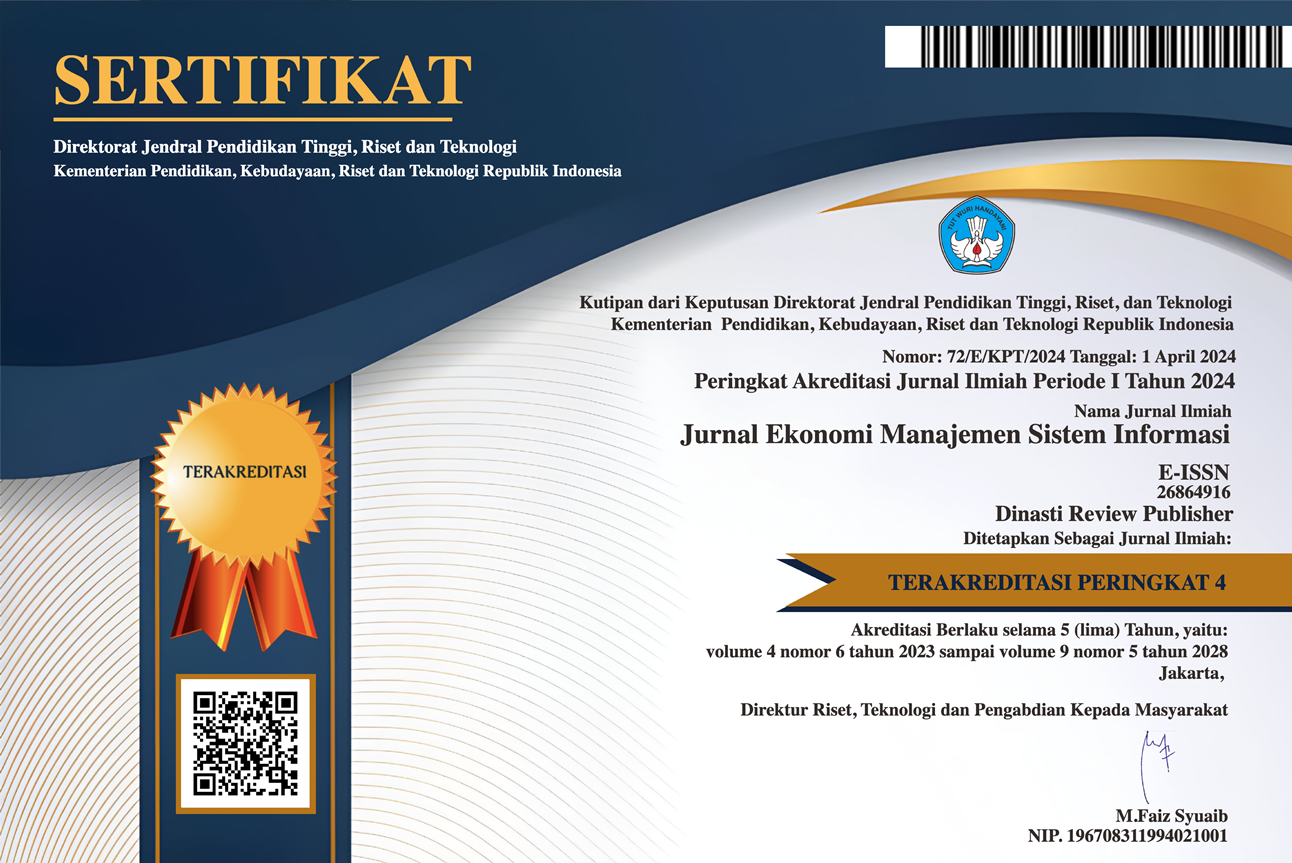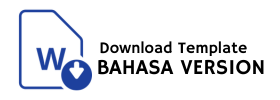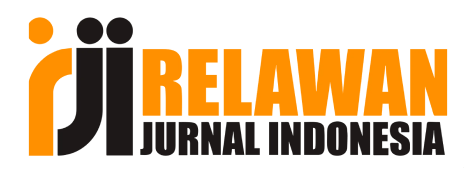Applying Resource-Based View for Competitive Advantage in the it Industry: A Case Study on PT Metro Indonesian Software
DOI:
https://doi.org/10.38035/jemsi.v6i4.4442Keywords:
Resource-Based View, VRIO, Competitive Advantage, IT Industry, Software House, Human Capital, Organizational StrategyAbstract
This study examines how PT Metro Indonesian Software leverages its firm resources to build a competitive advantage in the IT industry. Using the Resource-Based View (RBV) framework and the VRIO model, the research identifies the role of physical capital, human capital, and organizational capital in shaping the company's competitive positioning. Data was collected through semi-structured interviews with key informants, including company directors and employees, as well as non-participatory observations. The study highlights that the company effectively utilizes its technological infrastructure, skilled human resources, and agile development methodologies to maintain efficiency and innovation. However, challenges such as maintaining employee discipline, adapting to fast-changing industry trends, and cybersecurity threats remain critical considerations. The findings suggest that a continuous evaluation and strategic resource allocation are essential for sustaining long-term competitive advantage in the dynamic IT sector.
References
Amartha. (2024). Apa itu Tech Company? Pahami Jenis-jenisnya Berikut Ini. Amartha. https://amartha.com/blog/tech/apa-itu-tech-company/%0A
Bachtiar, P. P., Diningrat, R. A., Kusuma, A. Z. D., Izzati, R. Al, & Diandra, A. (2020). Ekonomi Digital untuk Siapa? Menuju Ekonomi Digital yang Inklusif di Indonesia.
Badan Pusat Statistik. (2023). Indeks Pembangunan Teknologi Informasi dan Komunikasi 2022.
Badan Pusat Statistik Sumatera Barat. (2024). Perkembangan Ekonomi Sumatera Barat (Vol. 16).
Balius, J. (2023). What Are the Different Types of Tech Companies? The Ultimate Guide. Filament Digital. https://filament.digital/types-of-tech-companies/
Baxter, P., & Jack, S. (2008). Qualitative Case Study Methodology: Study Design and Implementation for Novice Researchers. The Qualitative Report, 13(4), 544–559. https://doi.org/10.46743/2160-3715/2008.1573
Estensoro, M., Larrea, M., Müller, J. M., & Sisti, E. (2022). A resource-based view on SMEs regarding the transition to more sophisticated stages of industry 4.0. European Management Journal, 40(5), 778–792. https://doi.org/10.1016/j.emj.2021.10.001
Haryanto, A. T. (2024). APJII: Jumlah Pengguna Internet Indonesia Tembus 221 Juta Orang. DetikINET. https://inet.detik.com/cyberlife/d-7169749/apjii-jumlah-pengguna-internet-indonesia-tembus-221-juta-orang
Kero, C. A., & Bogale, A. T. (2023). A Systematic Review of Resource-Based View and Dynamic Capabilities of Firms and Future Research Avenues. International Journal of Sustainable Development and Planning, 18(10), 3137–3154. https://doi.org/10.18280/ijsdp.181016
Lin, Y., & Wu, L.-Y. (2014). Exploring the role of dynamic capabilities in firm performance under the resource-based view framework. Journal of Business Research, 67(3), 407–413.
Ma?achowski, B. (2024). ScienceDirect ScienceDirect ScienceDirect Quantitative skill evaluation criterion for selecting programmers in software criterion development companies Quantitative custom skill evaluation for selecting programmers in custom software development. Procedia Computer Science, 246, 5368–5377. https://doi.org/10.1016/j.procs.2024.09.660
Mumpuni, A. (2024). Kominfo Sebut Indonesia Butuh 458 Ribu Talenta Digital per Tahun. Tirto.Id. https://tirto.id/kominfo-sebut-indonesia-butuh-458-ribu-talenta-digital-per-tahun-g1lg
Nayda, Y. (2024). 9 Challenges of Enterprise Software Development. SmartTek Solutions. https://smarttek.solutions/blog/challenges-of-enterprise-software-development/
Porter, M. E. (2008). The Five Competitive Forces That Shape Strategy. Harvard Business Review.
Shanks, G., & Bekmamedova, N. (2018). Research Methods: Information, Systems, and Contexts. Chandos Publishing. https://doi.org/https://doi.org/10.1016/b978-0-08-102220-7.00007-8
Steininger, D. M., Huntgeburth, J. C., & Veit, D. J. (2011). Conceptualizing Business Models for Competitive Advantage Research by Integrating the Resource and Market-Based Views. Journal of the Association for Information Systems, 286, 1–12.
Sugiyono. (2020). Metode Penelitian Kuantitatif Kualitatif dan R&D (2nd ed.). Alfabeta.
Triyani, Usman, B., & Aseanty, D. (2024). The Effect of Organizational Ambidexterity , Innovation Capability and Leadership Competencies on Business Peformance Mediated Competitive Advantage in Software House Industry Employees in Indonesia. 2(1980), 1708–1727.
Vigfússon, K., Jóhannsdóttir, L., Ólafsson, S., & Köseoglu, M. A. (2024). Integrating resource-based and market-based views in the fisheries industry – CEO perspectives. Marine Policy, 171(August 2024). https://doi.org/10.1016/j.marpol.2024.106454
Downloads
Published
How to Cite
Issue
Section
License
Copyright (c) 2025 Fabel Fachrezzy, Donard Games, Hafiz Rahman

This work is licensed under a Creative Commons Attribution 4.0 International License.
Hak cipta :
Penulis yang mempublikasikan manuskripnya di jurnal ini menyetujui ketentuan berikut:
- Hak cipta pada setiap artikel adalah milik penulis.
- Penulis mengakui bahwa Jurnal Ekonomi Manajemen Sistem Informasi (JEMSI) berhak menjadi yang pertama menerbitkan dengan lisensi Creative Commons Attribution 4.0 International (Attribution 4.0 International CC BY 4.0) .
- Penulis dapat mengirimkan artikel secara terpisah, mengatur distribusi non-eksklusif manuskrip yang telah diterbitkan dalam jurnal ini ke versi lain (misalnya, dikirim ke repositori institusi penulis, publikasi ke dalam buku, dll.), dengan mengakui bahwa manuskrip telah diterbitkan pertama kali di Jurnal Ekonomi Manajemen Sistem Informasi (JEMSI).











































































